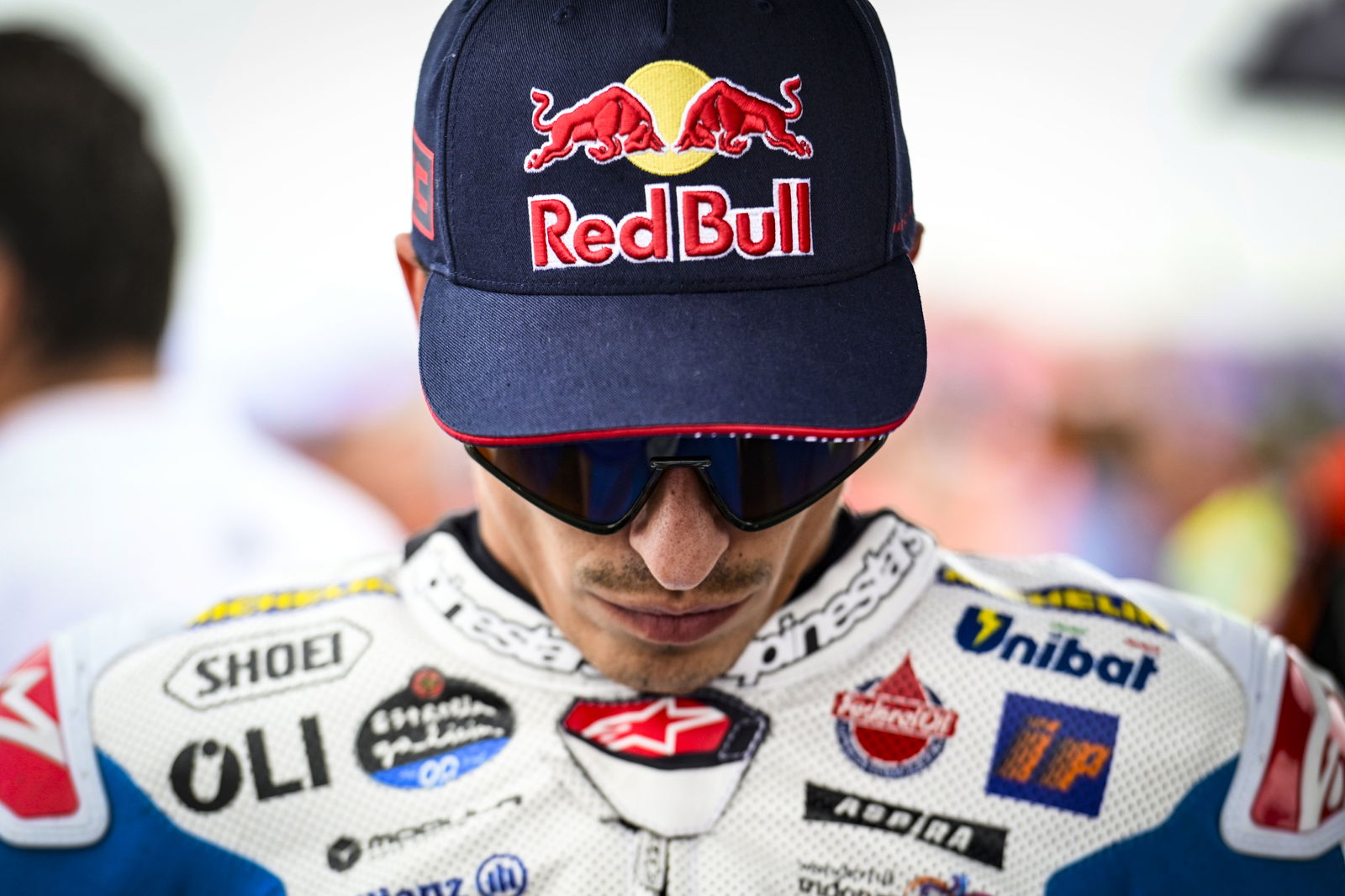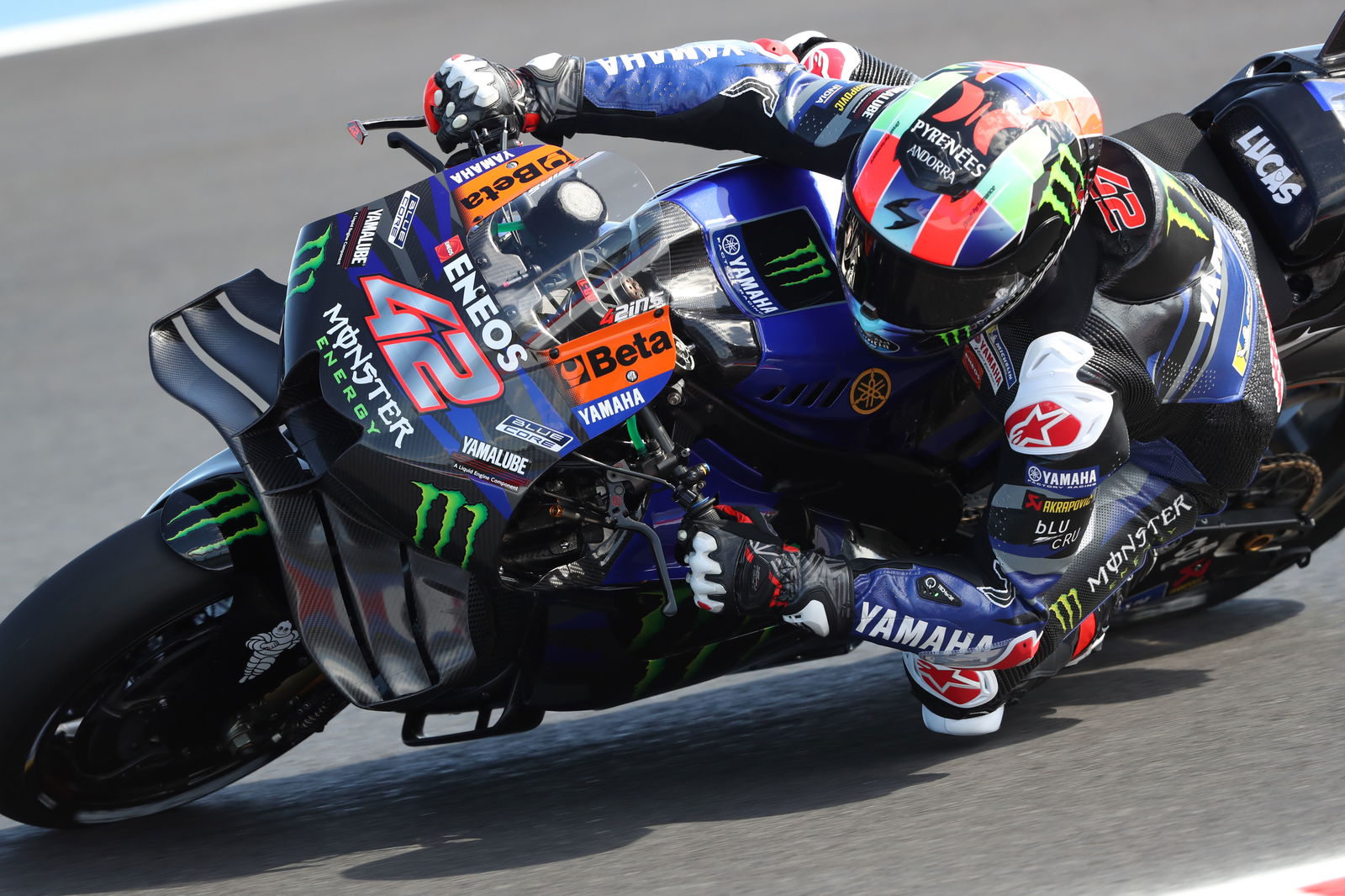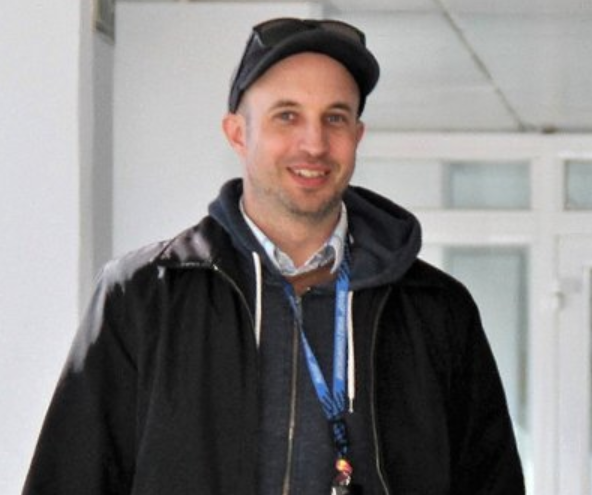Yamaha confirms V4 engine plans for MotoGP
Yamaha is developing a V4 MotoGP engine which could be seen on track during 2025.

Yamaha, which has raced Inline four-cylinder engines since the start of the MotoGP era, is ‘busy developing a V4 powerplant’.
Yamaha Racing managing director Lin Jarvis confirmed the news in an interview with MotoGP.com.
Jarvis stopped short of giving a timeframe for the V4's debut, which will be "when it is quicker than the Inline".
But the engine is already being bench-tested and could be on track "in the middle of next year".
“I can confirm that we are busy developing a V4 powerplant,” Jarvis said.
“It’s something that goes back a while, because when Suzuki was still here, there were two manufacturers running with the Inline4. And obviously the other competitors running with the V[4].
“In the last years, however, we've seen many, many technical developments in this sport and of course Suzuki stepped out. So we've been the only manufacturer remaining with the Inline4.
“The Inline4, in our opinion, still has plenty of capacity to be developed and to be improved.
"But when you have all of your competitors using V4s and now as we look towards the 2027 regulations, it's important for us to fully understand the potential of a V4 versus the Inline4.
“So based on that, some time ago we took the decision to start the project. The project is on schedule… The engine is already being bench-tested.
"We've not run it in a bike yet but when it is ready with its durability testing, then we'll finally start to track test it.”
Jarvis also indicated that Yamaha still has an open mind on whether to use an Inline or V4 engine for the new 850cc era.
“When [the V4 is] quicker than the Inline4, we'll bring it in. So let's see!
"Obviously, one of our intentions is to look and to check what type of engine we need for 2027.
“But at the moment ‘27 is too far away for us, so we need to start now. We need to get experience. I don't know when you will see it racing, but track testing will not be so far away.
“Based upon the development and hopefully positive developments, then maybe in the middle of next year, you might see it on a track.
“We've got a lot of work ahead of us but I think with the two strong teams, with four strong riders, plus a lot of very good engineers working for us, I think that we will return.”
Following Suzuki’s withdraw, Yamaha is the only manufacturer still using an Inline4 engine against the V4 powerplants of Ducati, Aprilia, KTM and Honda.
Although Yamaha won the world championship as recently as 2021, with Fabio Quartararo, it hasn’t won a race since mid-2022.
That leaves Suzuki’s pair of wins at the end of 2022 as the most recent victories by an inline engine. Today’s news means they might also be the last inline MotoGP wins for the foreseeable future.
Quartararo, just 13th in the present world championship standings, as the top rider on a Japanese bike, hinted at big decisions being made behind the scenes when he re-signed earlier this year.
Quizzed recently on the V4 rumours, the Frenchman said:
“I think we have to consider all the options… I never rode a V4 but if we look at the bikes that are working, they are V4s. Okay, Honda is struggling, but we are the only ones with the Inline. Maybe it is something to consider.”
Although the switch from 1000cc to 850cc engine capacity in 2027 is the obvious moment for such a change, other riders - including future Pramac signing Miguel Oliveira - have underlined that Yamaha does not want to wait that long.
“Even though the [technical] rules are changing in two years’ time, Yamaha wants to come back to the top as soon as possible,” Oliveira said.
Since Yamaha and Honda are in the lowest concession ranking, they are free to modify their MotoGP engines throughout the year.
That means they can start 2025 with the latest evolution of their current Inline engine, then switch across to the V4 if and when they consider it to be race ready.
Ducati, Aprilia and KTM must homologate their engine design at the start of each season.
The arrival of Oliveira and Jack Miller for the new Pramac satellite project means Yamaha will soon have riders with V4 experience at Ducati (Miller), Honda (Alex Rins, Miller), KTM (Oliveira, Miller) and Aprilia (Oliveira).
Rins, Miller and Oliveira have also won MotoGP races on V4s at Honda, Ducati and KTM.
Yamaha can also count on its partnership with Marmotors, headed by ex-F1 designer Luca Marmorini, to aid in its V4 design. Marmorini previously contributed to Aprilia’s RS-GP V4 engine.
However, Honda’s ongoing woes show that fitting a V4 is unlikely to be a magic fix for Yamaha, whose M1 is also seen as lacking in areas such as aerodynamics and electronics compared to the European machines.
Honda raced a V5 engine during the initial 990cc MotoGP era, from 2002-2006, but MotoGP rules now state a ‘maximum 4 cylinders’.
The last time Yamaha raced a V4 engine in grand prix was the YZR500 two-stroke, before switching to the same Inline format as its production Superbikes for the start of the four-stroke MotoGP era.
After struggling in 2002 and 2003, the M1 made a breakthrough when Masao Furusawa introduced the ‘big bang’ crossplane crankshaft to coincide with Valentino Rossi’s arrival in 2004.
Although never the fastest bike on the straight, sweet handling and corner speed soon became the hallmarks of the M1, which won four riders’ titles with Rossi, then three more for Jorge Lorenzo before Quartararo’s 2021 triumph.
However, the arrival of advanced aerodynamics had already begun to paper over the V4’s cornering cracks. The narrower V4’s top speed advantage also allows higher levels of drag-inducing downforce to be used.
Yamaha has pushed hard to increase engine performance, making power the top priority for Marmotors, but it has come at the cost of rideability and the team’s best GP result this season is seventh place.


